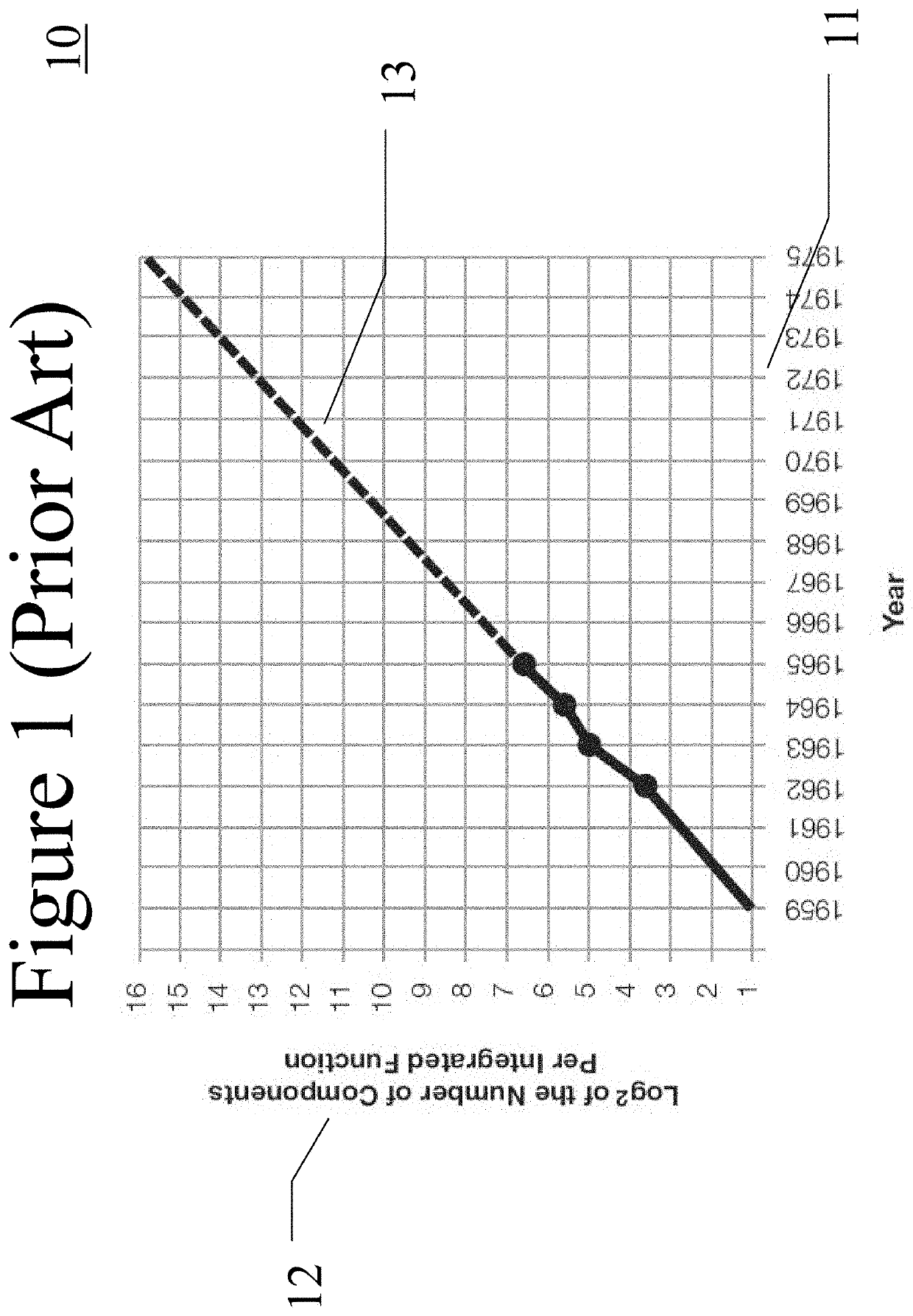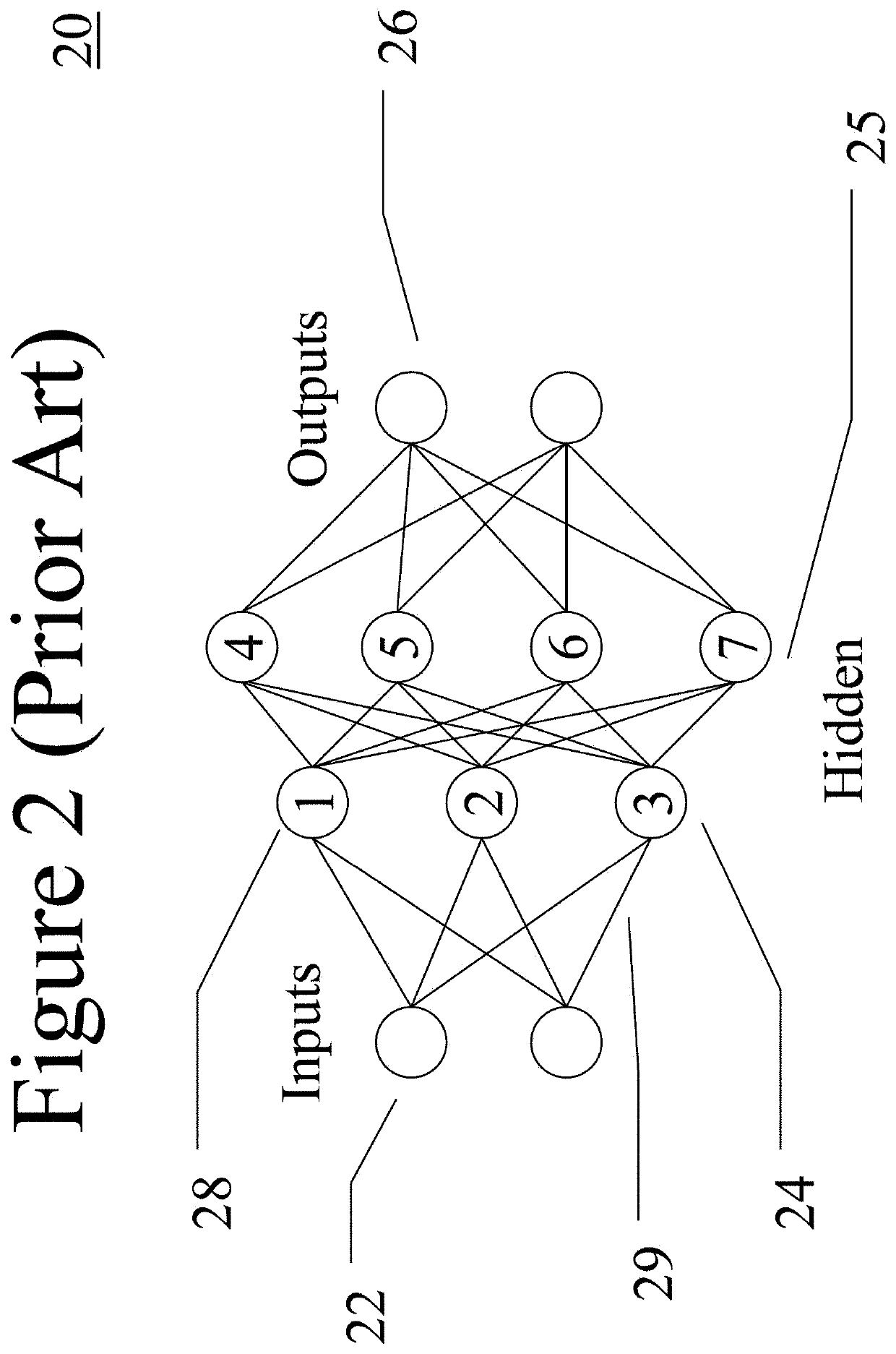Wave propagation computing devices for machine learning
a computing device and wave propagation technology, applied in computing models, biological models, instruments, etc., can solve the problems of prohibitive resources, and high cost of computer hardware and software, etc., to process large and sparse data sets
- Summary
- Abstract
- Description
- Claims
- Application Information
AI Technical Summary
Benefits of technology
Problems solved by technology
Method used
Image
Examples
embodiment 120
[0188]FIG. 15 is a diagram that depicts a finite-element solid model 150 of an alternate embodiment of a reservoir that is similar to embodiment 120 of FIG. 12, seen at an angle from the top. The model is drawn to scale in the plane, but layer thicknesses are exaggerated for clarity. The cavity 121 has an asymmetric geometry as well as internal boundaries 122, in the form of through-holes. The cavity is surrounded by piezoelectric TE-mode transducer material layer 124, though LE-mode or SAW transducers can also be manufactured. Passive or active temperature compensation of the transducer response is optionally included. A top conductive electrode 123 defines the electro-mechanically active region of each transducer. A lower conductive electrode 128 is present under at least the transducer material layer 124. Electrode 128 may also be present under the cavity 121. Transducers 127 are used for input and output and may optionally be used for feedback, self-test or remain unused.
[0189]F...
embodiment 190
[0193]FIG. 20 is a diagram that depicts a cross-section 200 of embodiment 190 presented on FIG. 19. The lower conductive electrode is the layer 141. The cavity material is the layer 142. Layer 142 can be a linear, non-linear, piezoelectric, electrostrictive or photoelastic material or stack of materials. This layer contains patterned holes or inclusions that may go through the entire thickness of the layer 145, or partial through the thickness of the layer 146. The TE-or LE-mode transducer 204 is placed on top of the cavity 142. It consists of conductive top and bottom electrode 144, a piezoelectric layer 143. The piezoelectric layer 143 can additionally have electrostrictive or photoelastic properties. The conductive electrode layers 144 are on top and bottom of the piezoelectric layer 143. They form the electrical ports 147 to which the AWRC device is connected to other circuits. Acoustic coupler 202 can optionally be used to decouple the electrical response of the transducer 204 ...
PUM
 Login to View More
Login to View More Abstract
Description
Claims
Application Information
 Login to View More
Login to View More - R&D
- Intellectual Property
- Life Sciences
- Materials
- Tech Scout
- Unparalleled Data Quality
- Higher Quality Content
- 60% Fewer Hallucinations
Browse by: Latest US Patents, China's latest patents, Technical Efficacy Thesaurus, Application Domain, Technology Topic, Popular Technical Reports.
© 2025 PatSnap. All rights reserved.Legal|Privacy policy|Modern Slavery Act Transparency Statement|Sitemap|About US| Contact US: help@patsnap.com



